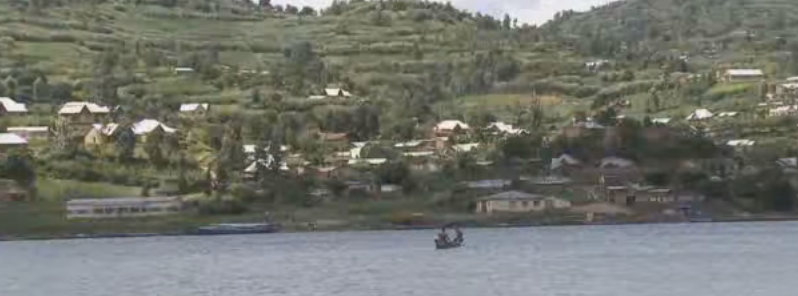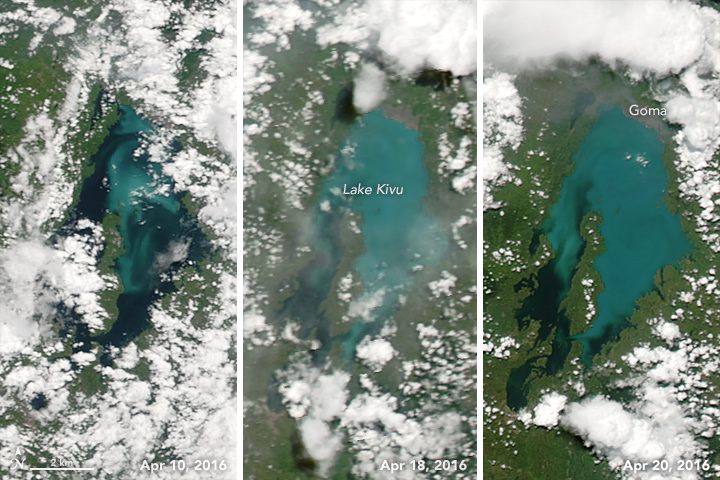Unusually strong ‘whiting event’ in progress at Lake Kivu, Africa

Lake Kivu, one of Africa's greatest lakes, suffered an unexpected change in coloring during April 2016. The usually blue waters became milky, a phenomenon which attracted a lot of attention as the lake is known for storing potentially deadly amounts of gas. However, according to experts, the change in color is most likely due to a "whiting event", a phenomenon frequently observed across the Great Lakes of North America and Europe. NASA's Terra and Aqua satellites gathered three natural-color images of the event, on April 10, 18, and 20.
Lake Kivu is situated on the border between Rwanda and the Democratic Republic of the Congo. It provides the freshwater to almost 2 million people, serves for fishing and a transportation route. Its geological setting is such that it is connected to the volcanic plumbing of the East African Rift and, as such, stores vast amounts of dissolved methane and carbon dioxide. This has raised some concerns among the local officials and scientists as other lakes in Africa have already caused distress by abruptly discharging gasses and suffocating those who found themselves in the vicinity at the time.

Video credit:FJT4
Because of these, potentially dangerous properties, the experts have been continuously monitoring water and volcanic conditions, as a part of the Lake Kivu Monitoring Program (LKMP), and developing a platform for extracting gas and using it to produce energy, to lower the risk of danger.
A research team from the LKMP, lead by Augusta Umutoni, has observed signs of seismic and volcanic activity in the area during April. However, it turned out that the change in color is due to a so-called "whiting event", after all. The whiting occurs in lakes rich in calcium carbonate, when the air and water temperatures rise, along with the surface pH levels. As a part of the process, the carbonates precipitate out of the water as calcite particles of white or gray color. Effects similar to whiting can also be caused by the phytoplankton bloom.


Images obtained from NASA's Terra and Aqua satellites on April 10, 18 and 20, 2016. Image credit: NASA/Terra/Aqua
"We don't know yet for sure what caused this particular whiting event at Lake Kivu. It is certainly unusually strong, but there have been similar weaker events before. It can be caused by a phytoplankton bloom, by high surface water temperatures, or by a combination of both," said Martin Schmid of the Swiss Federal Institute of Aquatic Science and Technology.
Blooms or whiting events can also be enhanced by mixing of the surface water layers and lower layers which can bring up more calcium and other nutrients from the depths of the lake.
"The mixing is an annual event, but the intensity of responses of carbonate precipitation varies. East African lakes do respond to El Niño events, and the current El Niño may also had an affect on the physical processes in the lake," explained Robert Hecky of the University of Minnesota-Duluth.
Featured image credit: FJT4

Maybe another “Dead Sea” in process? Not that I have ever heard that the “Dead Sea”is white. I hope the lake can continue to be life supporting.